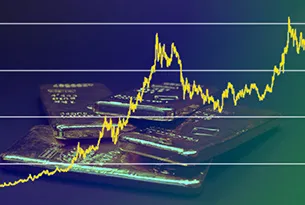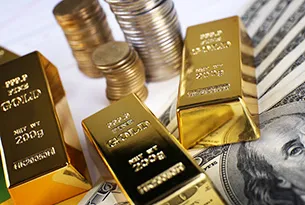Promises of more production and shipping from Saudi Arabia barely moved the price of oil and gas. But this is the real country investors should be watching, writes MoneyShow’s Jim Jubak, also of Jubak’s Picks.
Talk is cheap. Especially when you’re in the middle of an oil price war.
Saudi Arabia’s oil minister Ali al-Naimi certainly didn’t expect global oil markets to send the price of crude tumbling just because he said "I think high prices are unjustified today" at a March 20 press conference in Qatar.
That’s why he paired talk with action—or at least with talk of the actions that the Saudis had taken or could take. Saudi Arabia had an extra 2.5 million barrels a day of production capacity that it could bring on line, Saudi oil storage reserves around the world were full, and a newly hired fleet of supertankers were on en route to the United States.
But al-Naimi must have been disappointed in the market’s reaction to this salvo. On that day, the price of Brent crude, the European benchmark, fell just $1.59 a barrel, or 1.3%, to close at $124.12. (Brent crude is up, as of the close on March 20, by 15% in 2012.)
One day’s battle doesn’t decide a war, certainly, but the Saudis have pulled out their big guns, and they didn’t make much of an impression.
Is there anything Saudi Arabia, or the governments of Europe and the United States, can do to stop oil from moving higher? Or have the speculators won a free hand to drive up oil prices—and the price of gasoline—until the day they decide to take their profits?
Let’s start by looking at what the Saudis did, and why those actions didn’t impress the global oil market.
Saudis’ Big Effort Draws a ’So What?’
First, al-Naimi talked up Saudi Arabia’s ability to raise production.
In November, the Saudis increased production to 10.05 million barrels a day. That was the highest level of production in more than 30 years. The country will pump about 9.9 million barrels a day in March and April, and it has the capacity to produce as much as 12.5 million barrels a day, the Saudis say.
That would be more than enough to make up for the 1 million barrels a day from Iran that would be lost from global supplies if the United States, Europe, Japan, and other countries stop buying Iranian oil as part of a program of sanctions designed to end that country’s efforts to build a nuclear weapon.
Second, al-Naimi ridiculed the idea that the Iranians could cause a global oil crisis by shutting the narrow Strait of Hormuz. "If you believe Hormuz will close, I will sell you the Egyptian pyramids." (Who knew there was a Saudi equivalent of the Brooklyn cry of "Hey mister, do you want to buy a bridge?)
Besides scoffing at the Iranian ability to close the gulf, which handles 30% of the world’s seaborne trade in oil, al-Naimi pointed out that his country had filled its storage facilities in Rotterdam, Netherlands; Sidi Kerir, Egypt; and Okinawa, Japan. Together, those storage sites hold about 10 million barrels of oil, he noted.
Third, Vela, the shipping arm of government-owned oil producer Saudi Aramco, has an oil express headed for the US. In 2011, Vela hired one very large crude oil carrier, a tanker capable of carrying 2 million barrels of oil, every other month to ship oil to the US. Vela has stepped up its hiring rate—this month—to 11 very large crude carriers.
The message is clear, the Saudis hope: US refineries will have all the oil they need, no matter what happens with Iran, the sanctions and the Strait of Hormuz. (US oil refineries are key to the global prices of refined oil products, because the US is a major exporter of refined petroleum products.)
All in all, that’s a pretty impressive lineup of action. So why didn’t it knock more off the price of oil than a meager 1.3%?
What the Speculators Know
A big part of the market’s decision to shrug off the Saudi oil minister was a sense that there wasn’t anything new in al-Naimi’s action plan. Traders who have bid up the price of oil already had these moves figured into their scenario.
So, for example, anyone speculating on the rising price of oil knows the Saudi numbers by heart—and doubts that the math works out the way al-Naimi says it does.
The Saudi oil minister dismissed fears of production shortfalls from the Sudan and Yemen, predicted that Libya’s oil production would rapidly recover from the country’s civil war, and looked forward to increased production from Iraq. If you’re speculating that oil prices will rise, you’re operating on a very different assessment of production from these four countries.
And speculators also don’t believe the Saudi estimate of how much additional oil the country could pump. In February, the International Energy Agency reduced its estimate of the maximum output from Saudi wells to 11.88 million barrels a day, from its previous estimate of 12 million barrels. That puts the agency‘s estimate more than 600,000 barrels a day below al-Naimi’s figures for maximum Saudi production.
There’s also the little matter of how much of that "spare" capacity is actually spare. Domestic demand for oil in Saudi Arabia is at a seasonal low point. It will rise when summer plunges the country into peak air-conditioning season.
It didn’t hurt the speculators’ case, either, when on Wednesday the US Energy Information Administration said that US inventories of crude fell by 1.2 million barrels to 346 million barrels in the week ended March 16. Analysts had expected an increase of about 2.2 million barrels.
Gasoline inventories dropped as well, by 1.2 million barrels. This is supposed to be the seasonal shoulder period when demand is low and inventories build in advance of the summer driving season.
What everyone knows of the government budgets in the big oil-producing countries of Saudi Arabia and Russia also makes the speculative trade on higher oil prices more attractive. Russia and Saudi Arabia need $100-a-barrel oil to bring their national budgets into balance. If you’re a trader in oil, that serves as a floor to the downside.
When the Saudis and the other members of the Organization of Petroleum Exporting Countries say that $100 a barrel is about right for the global price of oil, they mean it. Even oil producers such as the Saudis, who want to avoid an oil price shock that would slow the global economy, aren’t looking to cut the cash payments and subsidies that they’ve promised and risk domestic upheaval.
For an oil speculator, that limits risk if you’re wrong about oil prices going up.
|pagebreak|Limited Options
Oil speculators feel even more comfortable keeping with their bets on higher oil prices, because it’s very hard to see what more the Saudis, the Americans or the Europeans can do to control them. If al-Naimi’s list of the Saudi response to high oil prices is the best that they can do, well, these traders have taken that best shot and are still standing.
Speculators don’t seem to fear another release from world’s strategic oil reserves. Rumors that the United States and the United Kingdom had decided on a coordinated release sent the price of Brent crude down just $2 a barrel—the same-size drop generated by al-Naimi’s remarks—on March 15.
The very subdued reaction to that rumor is a result, I think, of traders’ experience with the June 2011 release of 30 million barrels by the United States and another 30 million barrels by other members of the International Energy Agency. That took prices modestly lower—well, something did—for three months.
But this time, countries including Germany and Italy have said they won’t participate, and any release would be a smaller move by just the United States and the United Kingdom in all likelihood. And speculators are also betting—bless their cynical hearts—that if President Barack Obama does authorize a release, he’ll do it closer to summer driving season and the November election.
As I survey the landscape, I have to agree with the speculators. I don’t see much on the near horizon that would make me bet against higher oil prices.
Oh, go out six months to a year, and Saudi plans to take old fields, such as the Dammam field (taken out of production in 1980), out of mothballs. That will boost production. And Saudi Aramco is spending money to get the new Manifa oil field into production sooner than expected—but what was expected was sometime in 2013, and it’s not clear how much time extra money will cut out of that schedule.
Saudi Aramco also boosted the number of drilling rigs at work in the country to 77 in January, Baker Hughes (BHI) estimates, from 59 at the trough for drilling activity in 2011. But again, that’s not production that will come online soon enough to change the thinking on what are, remember, short-term bets on the direction of oil prices.
The Threat Is Demand, Not Supply
The only thing that speculators betting on higher oil prices really have to fear right now is an economic slowdown that cuts demand for oil (which is, of course, exactly what the Saudis fear).
On recent evidence, even fears of a slowdown—without an actual slowdown itself—might be enough to smack oil prices over the head, and hard. Worries in the early part of this week that growth in China might be slowing more than expected were enough to send oil prices lower, taking the prices of shares of oil producers and oil-service companies down with them.
I’d be willing to bet dollars to doughnuts—a riskier bet when doughnuts didn’t sell for 99 cents at Dunkin’ Donuts (DNKN)—that the country oil speculators are watching most closely right now isn’t Saudi Arabia or the United States, but China.
News that real-estate prices have tumbled further or that China has cut back on its imports of copper would stall the increase in oil prices. News that industrial production had taken another downward turn or that China’s imports were down again might well be enough to cap this upward move in oil prices.
After all, oil speculators have made good profits. No use putting them at risk if the odds that have made this trade so profitable start to get worse.
So if you’re wishing for lower gasoline prices, maybe the thing to wish for is bad news on economic growth in China. Of course, you know what they say about being careful what you wish for.
That news might also put an end to the current rally in stocks and slow economic growth in the United States. That seems like a high price for lower gas prices in July.
And if you’re an oil trader, I know what speculation is likely to be attractive in say six to 12 months, when the additional capacity that the Saudis are now working to accelerate actually comes on line. Think it might be profitable then to bet on falling oil prices?



































